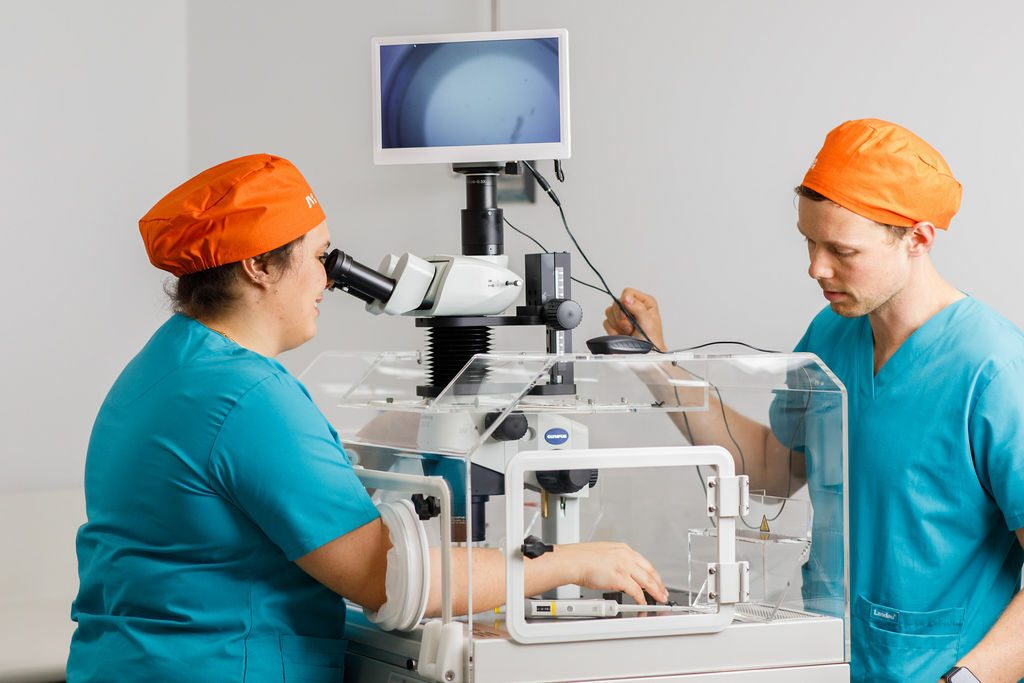How does ICSI work?


The egg is placed in customized dishes under a microscope and moved using a leading micro-manipulator. A holding pipette secures the mature egg and then a thin, sharp glass micropipette, loaded with a single sperm, pushes first through the zona pellucida (outer egg casing) and then the oolemma (the cell membrane of the egg) to enter the centre (cytoplasm). The sperm is most delicately deposited into the centre of the egg.
In other words, we do all of the work for the sperm - no swimming or penetration of the egg involved. The only thing left for the sperm to do is make the ‘spark’ of fertilisation happen.
After the ICSI procedure, the egg is placed into the incubator and checked the following day for signs of fertilisation.
As ICSI is more invasive and requires more handling than standard IVF insemination techniques, there is a small chance (less than 2%) that the egg may be damaged during the procedure – resulting in a non-viable egg.

Wherever you are on your journey, one of our supportive nurse enquiry team members can help you understand your options and take the next step. These conversations are free and informative.